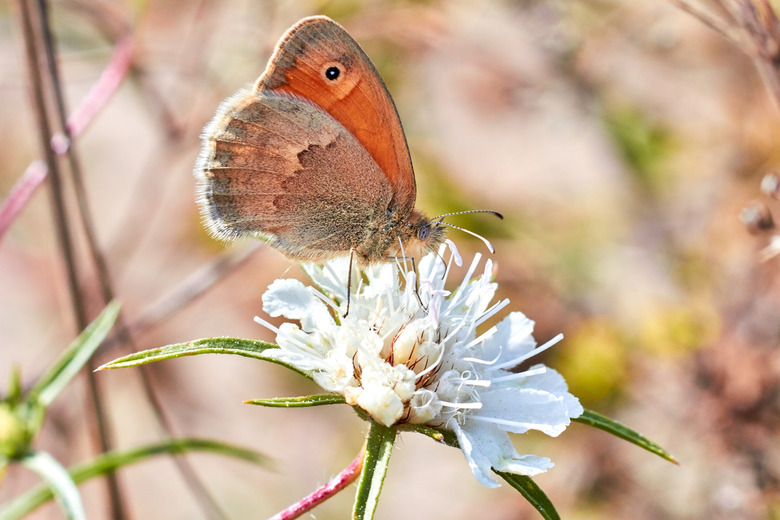Adaptations In Moths
An adaptation is a modification in the way a species looks or behaves over time that allows it to survive in its environment. Adaptation is a type of evolution that occurs as a result of natural selection; the individuals of a species that are better adapted to survive pass on their genes to the next generation, eventually leading to the adaptation spreading throughout the species population. Moths have evolved a number of adaptations for survival.
Industrial Melanism
Industrial Melanism
Industrial melanism is a classic example of adaptation, and a classic case took place in the British Isles involving the moth species Biston betularia. The coloring of the peppered moth, so called for its dark mottling, allows it to rest during the day undetected by predators on lichen-covered trees. During the 19th century, however, in areas where severe air pollution killed off the lichen, solid black peppered moths began appearing; within a century they made up 90 percent of the local population. With the lichens gone, the mottled peppered moths stood out against the tree bark and fell prey to birds. Individual moths with darker coloration were more apt to survive and pass on that trait, evolving eventually into the solid black form.
Flight Aerodynamics
Flight Aerodynamics
Moths have adaptations that make them incredible fliers. Narrow wings and streamlined abdomens give these moths the ability to fly rapidly and for sustained periods of time. Hawk moths are the strongest fliers of any moth; some species can fly as fast as 30 mph, while others can hover over flowers much like hummingbirds.
Camouflage and Mimicry
Camouflage and Mimicry
Moths that can blend into their surroundings during rest have a distinct advantage for survival from predation, as exhibited by the peppered moth. This adaptation is known as camouflage. Another moth adaptation is mimicry, which confuses or frightens off predators. Moths that are automimics have evolved markings such as wing patterns that look like large eyes; this tricks predators into thinking the moth is a much larger animal. Batesian mimics adapt their appearance to resemble another moth species that is dangerous or unpalatable to predators. Birds or other predators confuse the mimic species for the toxic or untasty species and won't attack.
Coevolution
Coevolution
Coevolution is an extreme form of mutualism that occurs when two species evolve together so they are dependent on one another. Yucca moths coevolved with yucca plants. The flowers of the yucca plant are shaped in such a way that only the yucca moth can pollinate them. The yucca moth lays its eggs inside the yucca flowers; the yucca moth caterpillars grow inside the flower's ovary, where they eat yucca seeds.
Cite This Article
MLA
Gambrel, Ellie. "Adaptations In Moths" sciencing.com, https://www.sciencing.com/adaptations-moths-8288620/. 22 November 2019.
APA
Gambrel, Ellie. (2019, November 22). Adaptations In Moths. sciencing.com. Retrieved from https://www.sciencing.com/adaptations-moths-8288620/
Chicago
Gambrel, Ellie. Adaptations In Moths last modified March 24, 2022. https://www.sciencing.com/adaptations-moths-8288620/
